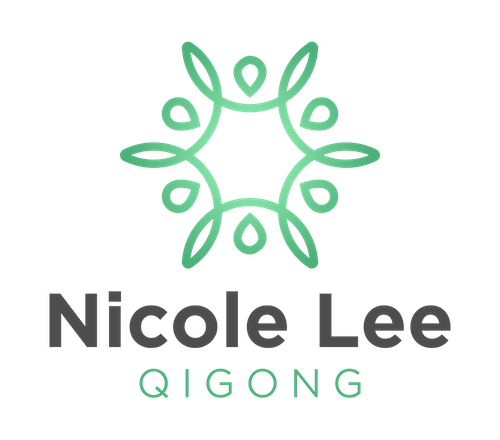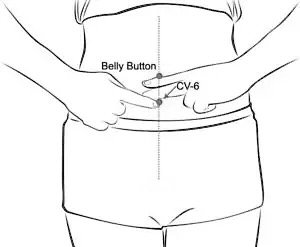Pop culture has us in breathing dysfunction
Have you ever been to a wellness class where they teach you to breathe into your belly, making it expand like a balloon? Well, that's not really the right way to breathe for good health. It's just another misleading trend from pop culture.
Become as a tender babe
The ancient Daoists closely observed nature and life. They discovered that we begin as excellent breathers. When we breathe, the air enters through our nose and fills our entire torso, including the abdomen and chest. This process creates energy called "vitality," which allows our Qi and blood to flow freely throughout our body.
The Daoist discovered that as we get older, our breath changes. For men, it tends to gather in the front upper lungs, while for women, it accumulates in the upper back of the lungs. This pattern is influenced by the Yin/Yang nature of male and female bodies. They believed that the breath rises in preparation for leaving the body through the mouth upon death. To live a long and immortal life, it was believed that one must activate their Qi through different energy pathways and maintain proper breathing throughout their life.
“Nurture the darkness of your soul until you become whole.
Can you do this and not fail?
Can you focus your life-breath until you become supple as a newborn child?”
Basically, as people go through life, their ability to breathe naturally often gets worse. Breathing problems affect about 20 percent of the population, along with the 330+ million people worldwide who have asthma. Our breathing patterns can be affected by various factors, like trauma, stuck feelings, stress, anxiety, posture, sitting too much, using technology, physical injuries, and other factors.
Mouth breathing, over-breathing and shallow breathing are some common forms of breathing dysfunction and we can add belly breathing to that list.
I have been told for a long time, in different classes like yoga, meditation, and qigong, to breathe in by expanding the stomach and breathe out by letting it go back. I admit, I have taught the same thing as well.
When we breathe deeply into our belly, it can prevent our muscles around the rib cage and chest from contracting and expanding properly. This can make our center of gravity shift forward, affect the stability of our pelvis, increase pressure on our spine from the back, and cause our diaphragm to move in an uneven way.
It's common to hear "take a deep breath," which is not necessarily bad advice. However, if we're used to breathing shallowly, it can lead to "vertical breathing" and "overbreathing." This means we may be taking in too much oxygen and not enough carbon dioxide. This imbalance can interfere with the transfer of oxygen to our body's cells and disrupt the pH levels in our blood.
Dysfunctional breathing, whatever the improper pattern may be can result in all kinds of health issues such as:
Cognitive problems - fatigue, poor memory
Spinal issues - forward head tilt, compression
Emotional imbalances - depressions, anxiety
Digestive issues - easily dehydrated, poor peristalsis, overweight
Sleep problems - impaired sleep, snoring, sleep apnoea
Dental concerns - gum disease, bad breath
The nose is for breathing, the mouth is for eating
This is a wise tidbit from Oriental Medicine but interestingly it is mirrored in other ancient cultures also. Did you know that women in Native American Indian tribes were observed by European settlers to press the lips of their babies and toddlers together to encourage the development of natural (nasal) breathing.
Practically the entire animal kingdom (with the exception of diving birds and aquatic animals) breathe through their nose, even under heavy exertion… only during times of illness would an animal be seen to be breathing through its mouth.
In my journey to address my personal breathing dysfunction, I have come to realize that my overemphasis on 'belly breathing' has played a significant role. Recognizing this, I sought the guidance of a biomechanics expert with whom I have been diligently working for the past few months. Together, we have been focusing on improving my spinal compression, rebalancing muscle tension, and enhancing contralateral reciprocation. I’ve also engaged in another deep dive into my Qigong theory and philosophy, delving into a myriad of resources and teachings. Through this process, I have (re)discovered profound wisdom surrounding breath-work that has become integral to my journey of healing and growth.
Breath-work of Daoist traditions
Abdominal breathing
Reverse abdominal breathing
Dantian breathing
Auric breathing
Embryonic breathing
Wave breathing
Kidney breathing
Pore breathing
Lung meridian breathing
Sipping breath
Cleansing breath
Any wonder we’re confused about breathing! The list above I compiled off the top of my head and its by no means inclusive. Each of these types of breath-work practices serve a purpose and there’s function in utilising these during the various practices of Qigong, Shen Gong and Neigong.
There’s A LOT of contrasting and ambiguous information around what some of the above Daoist breath-work techniques actually are and how to execute them. This is likely why there’s so many teachers and facilitators giving over simplistic instructions like belly breathing!
Daoist traditions often speak of breathing like a bellows… this description of breathing aligns to what I’ve been learning through my biomechanics training, and is supported by some of the more detailed information from Neigong breath-work techniques.
The majority of our modern population probably doesn’t even know what a bellows is!!
Breathing like a bellows means that we’re drawing the breath down into the abdominal region but we’re not solely focused there and we’re not distending the abdomen unnaturally outward. We’re breathing into the entire bellows (torso).
If we liken the CV6 acu-point, known as Qi Hai to the yellow star point on the bellows image above, this is where we initially focus our inhalation. This is a momentary focus, just long enough to sense a small expansiveness at that point. As we continue our inhalation we fill the entire bellows... sides, back, middle, top.
The breath is not just a core foundation, but the very essence of Qigong. It is the invisible force that fuels our vitality and connects us to the present moment. Without a deep understanding and conscious control of our breath, our practice can only go so far. That is why, even after ten years of exploring the depths of Qigong, I find myself returning to the basics with renewed enthusiasm. It is a humbling experience to revisit step one, as it reminds me of the simplicity and power that lies within the fundamentals. In this process of review and reset, I discover new layers of awareness and unlock untapped potential. So, here I am, embracing the beginner's mind once again, eager to cultivate my inner energy and embark on another leg of my Qigong odyssey.
Ready to begin your Qigong odyssey? Join me for a Qigong Fundamentals group in-person workshop or one-to-one online foundations program.





